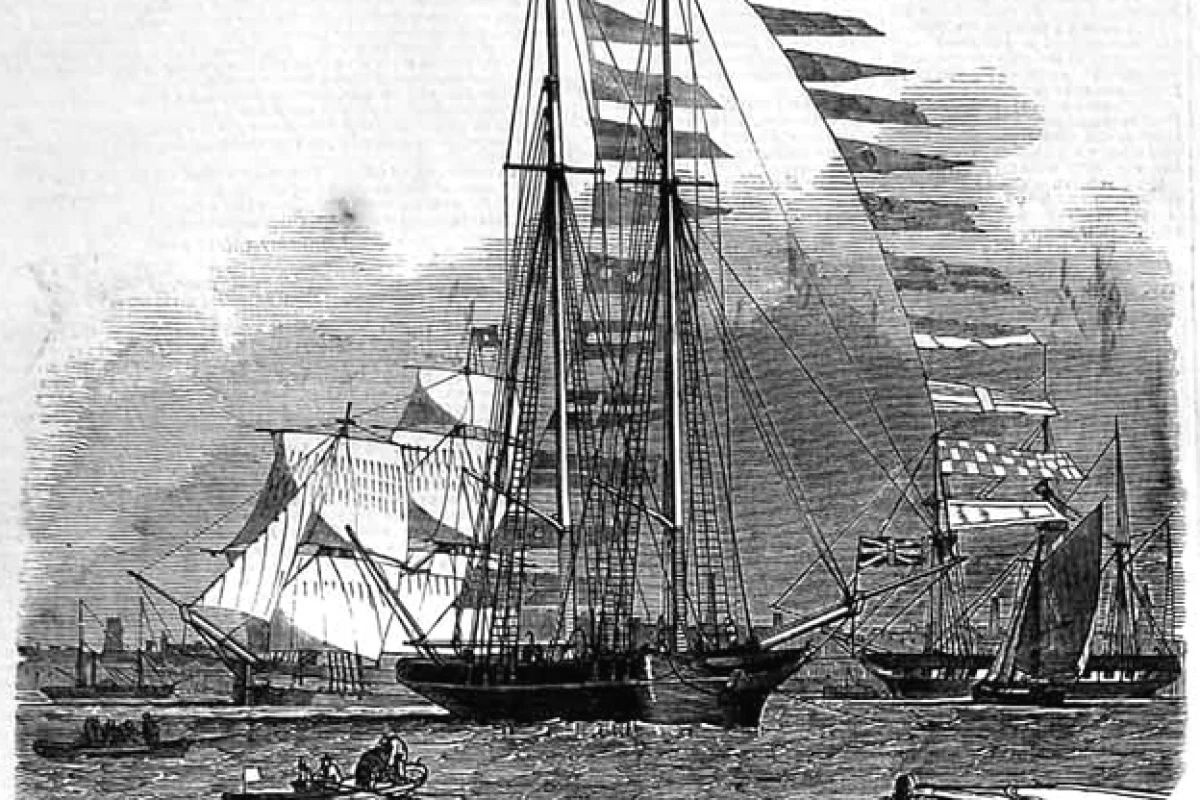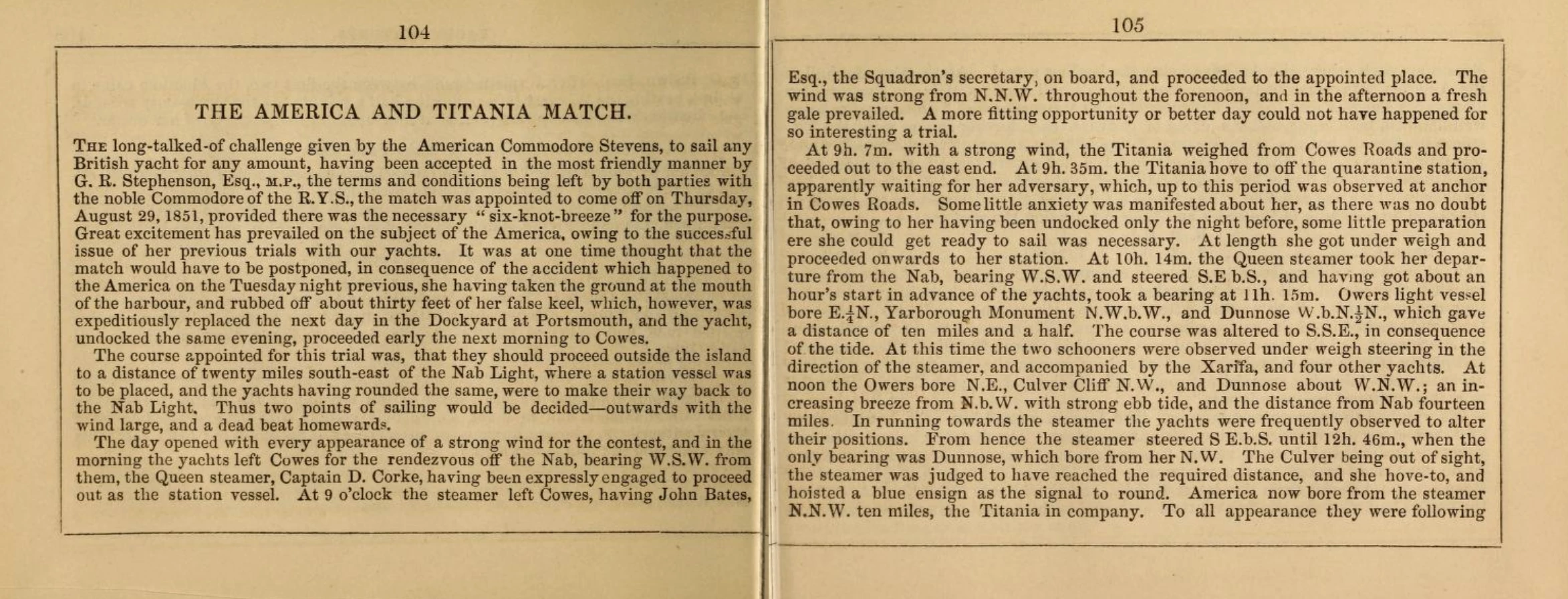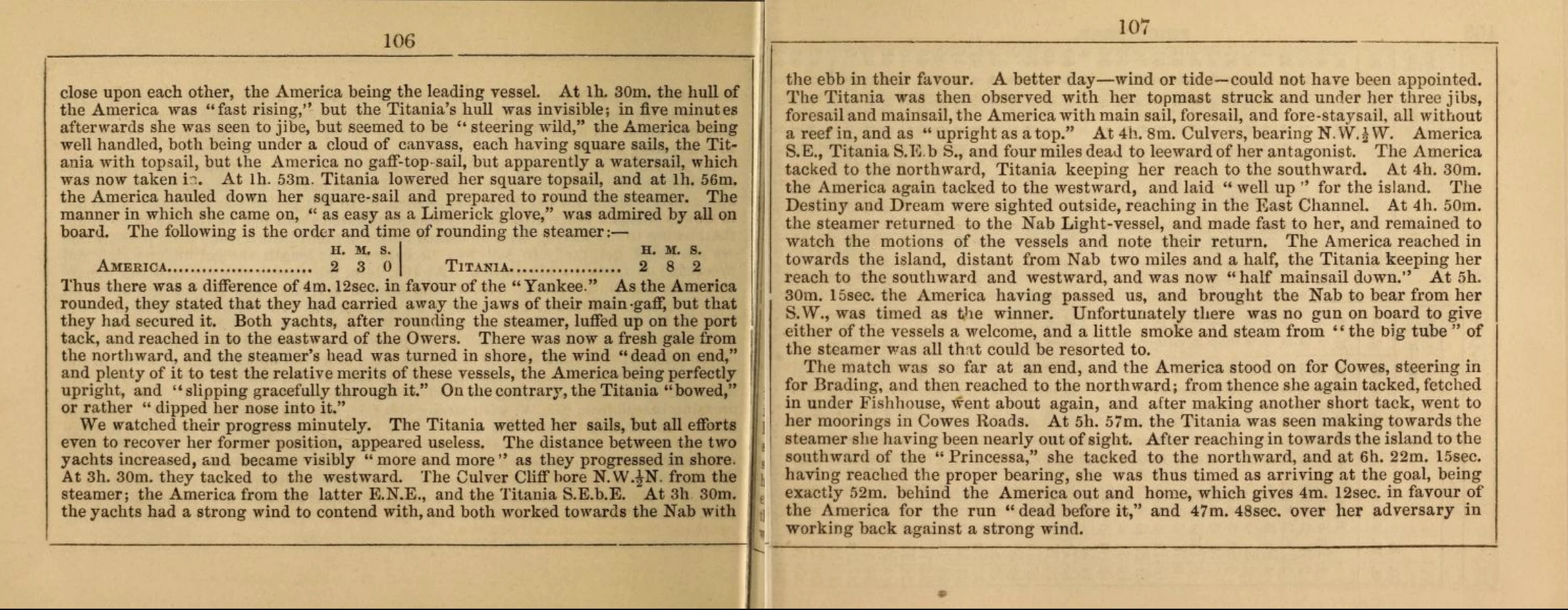The house with no knocker burned down in May of 1852. This must have been a source of some distress to her owner, Robert, then well into middle age and chronically ill with Bright's disease, who had come to see her as a retreat.
Unlike Robert's office at Great George Street, London, or his address across the royal parks at Gloucester Square, the house with no knocker was a place to be out of reach. (He actually called her, slightly more formally, "the house that has no knocker"). Having achieved no small amount of success in his career, unwelcome visitors had become a nuisance to him.
In the summer of 1851, the house with no knocker set sail for the Isle of Wight, the intent being to enter her into the first America's Cup. This is less surprising when you consider that the house with no knocker was not a house at all but a sailing boat: a schooner named Titania some 84 feet and 8 inches long (almost 26 meters in new money).
Alas she arrived too late to enter the race of August 22, but instead took on the winning boat, America, in a 20-mile race on August 29. According to an account in Hunt's Yachting Magazine, Titania was resoundingly beaten: by more than 4 minutes on the outward leg, and almost 48 minutes on the return. This was despite America having run aground days previous, necessitating emergency repairs at Portsmouth. (The America's Cup was subsequently named after the winning boat, having prior been called the Hundred Guinea Cup.)
The May 15, 1852 edition of the London Illustrated News recounts the destruction of the "handsome schooner" the following year:
"The fire originated in the cabin. There was no watch, nor any of the crew, out of eighteen persons, on board when the fire was discovered. The flames appear to have been first observed by some of the yachts' crews in the neighbourhood, a little before ten o'clock; and, on the alarm reaching Cowes, the town engine, as well as that from the dock, were despatched to the conflagration.
"At half-past ten the fire defied all efforts to extinguish it. There is no doubt, that had she been bereft of her powder and magazine (and which no vessel ought to have in a harbour like Cowes), the hull, spars, and rigging would have been saved. Nothing now remains of her but her iron shell, her bowsprit, figurehead etc.: she is completely gutted, even the deck-beams consumed."
The iron frame was reused by Robert's friend John Scott Russell to construct the schooner Themis. At the same time, Russell also built Robert a second Titania, 91 feet (approximately 28 m) in length, which launched in 1853.

Despite declining health, Robert made much use of Titania in the years up to his death in 1859. The previous winter he sailed her to Alexandria. In Egypt he dined with a friend similarly suffering due to Bright's disease which was, in both cases, latterly attributed as nephritis.
He made a final trip to Oslo, Norway, the following September, returning to Suffolk, England with a doctor, having fallen ill at a banquet. And yet it was his friend, three years his junior, who died the following day. Robert survived until October 12.
Despite his love of sail boats, Robert is better known for trains. His surname was Stephenson and, in 1829, he designed the famous Rocket steam locomotive. He built on the pioneering rail engineering of his father George Stephenson to become one of the greatest engineers of the nineteenth century and, probably, all time.
He was born 216 years ago today. His friend through illness was named Isambard Kingdom Brunel.







